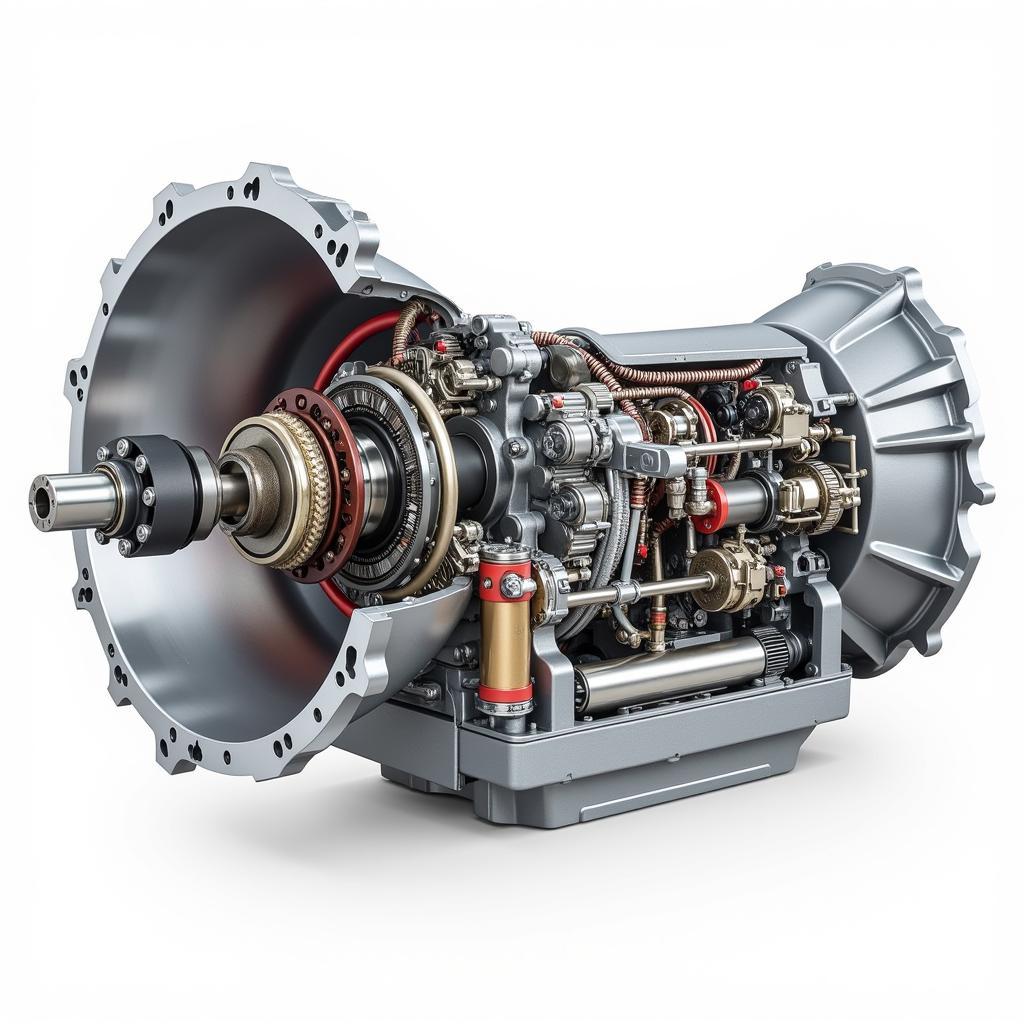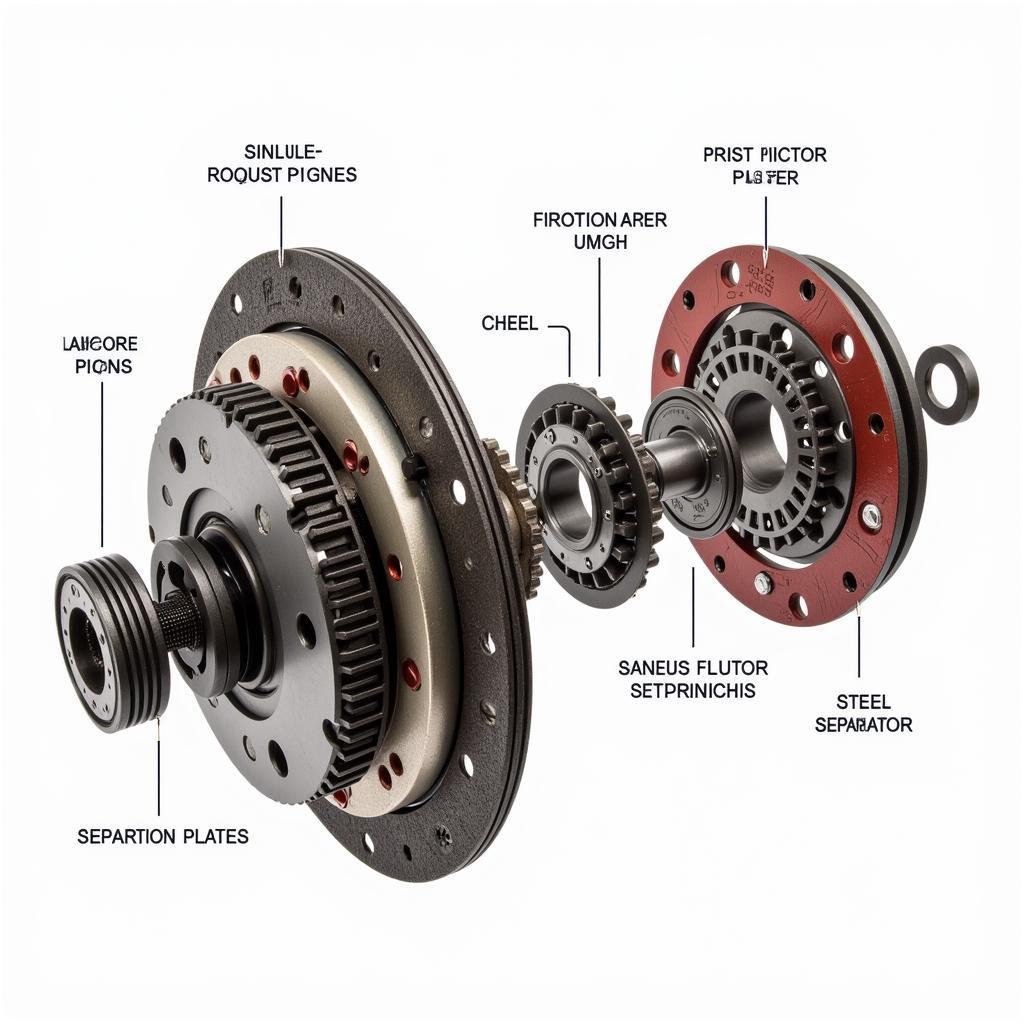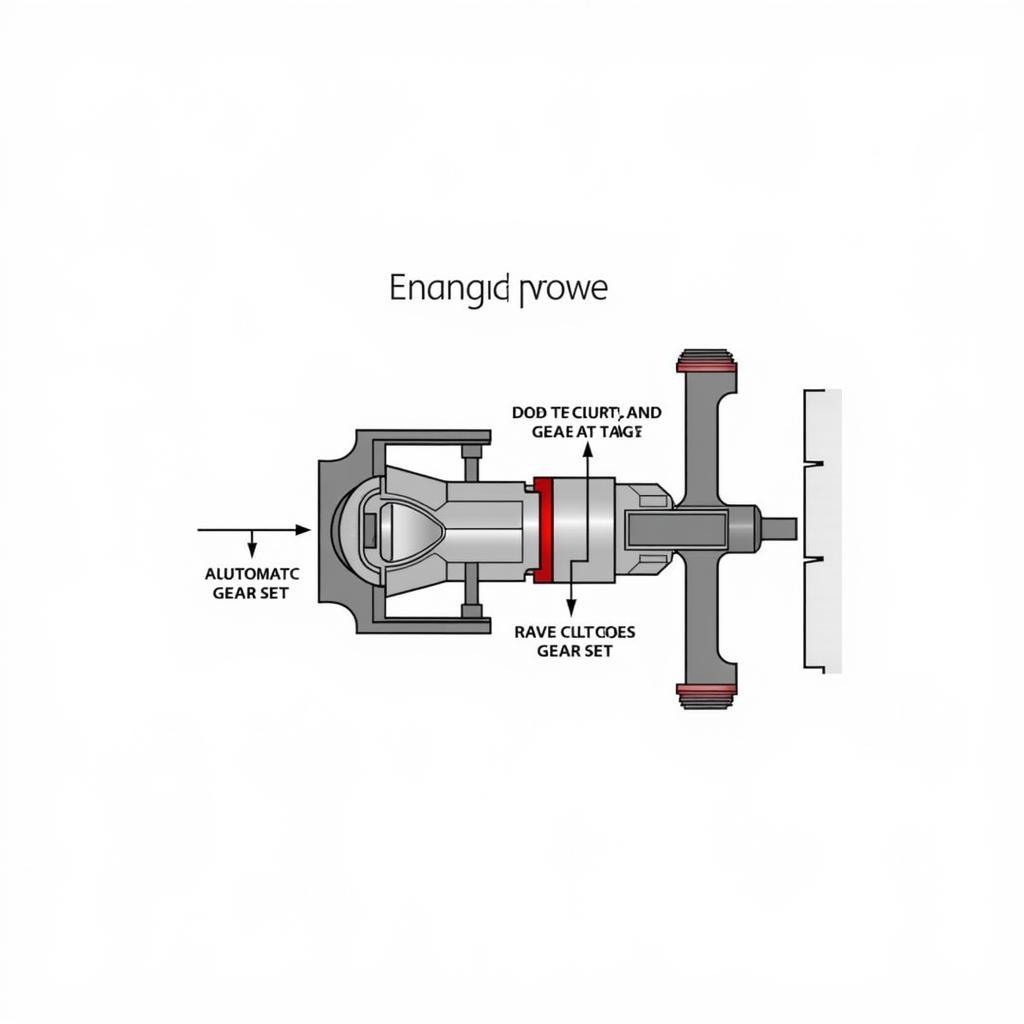Is There a Clutch in an Automatic Car?
December 1, 2024Is There A Clutch In An Automatic car? While it might seem counterintuitive, the answer is yes. Automatic transmissions do have a clutch, but it functions very differently than the clutch in a manual car. Let’s delve into the mechanics and understand the crucial role it plays.
Understanding the Automatic Transmission Clutch
Unlike the manual clutch operated by a pedal, the clutch in an automatic transmission is controlled by the car’s computer and hydraulics. It’s not a single friction disc like in a manual, but rather a complex system often involving multiple clutches, bands, and planetary gears working in concert. This intricate mechanism seamlessly shifts gears for you, providing a smooth and effortless driving experience.  Automatic Transmission Clutch System
Automatic Transmission Clutch System
How the Automatic Clutch Works
The automatic clutch system is responsible for engaging and disengaging different gear sets within the transmission. It does this by using hydraulic pressure to control clutches and bands, allowing the transmission to select the appropriate gear ratio for your driving conditions. This intricate dance of mechanical and hydraulic components happens automatically, without any input from the driver, hence the name “automatic transmission.”
For example, when you accelerate, the transmission’s computer signals the hydraulic system to engage specific clutches and bands. This action connects the engine to the appropriate gear set, allowing the car to move forward. As you increase speed, the process repeats, smoothly transitioning between gears to optimize power and efficiency.
Think of it like this: imagine a series of interconnected gears, each representing a different gear ratio. The automatic clutch system acts like a gatekeeper, selectively connecting and disconnecting these gears to match the engine’s output to the car’s speed. This eliminates the need for a manual clutch pedal and makes driving much simpler. Does every car have a clutch? Find out more in our related article.
Types of Automatic Clutches
There are several types of clutches used in automatic transmissions, each with its own advantages and disadvantages.
- Friction Clutches: Similar in principle to manual clutches, these use friction material to connect and disconnect rotating shafts.
- One-Way Clutches: These allow rotation in only one direction, playing a crucial role in automatic shifting.
- Multi-Plate Clutches: These consist of multiple friction plates stacked together, providing increased surface area for higher torque capacity.
 Multi-Plate Clutch in Automatic Transmission
Multi-Plate Clutch in Automatic Transmission
The specific type of clutch used in an automatic transmission depends on the design and intended application of the transmission itself. Some modern transmissions use a combination of different clutch types to optimize performance and fuel efficiency.
Common Issues with Automatic Clutches
While generally reliable, automatic clutches can experience issues over time. Common problems include:
- Clutch Slippage: This occurs when the clutch fails to fully engage, resulting in reduced power and acceleration.
- Hard Shifting: This can be caused by worn clutches, low transmission fluid, or problems with the hydraulic system.
- Overheating: Excessive heat can damage the clutch material and other transmission components.
If you experience any of these issues, it’s essential to have your car inspected by a qualified mechanic. If you have a 350z, check out our article on common problems with 350z.
Why Does Knowing About the Automatic Clutch Matter?
Understanding the basic function of the automatic clutch can help you better maintain your vehicle and diagnose potential problems. While you don’t interact with it directly, recognizing the signs of a failing clutch can save you from costly repairs down the road. “A well-maintained transmission is crucial for a smooth and efficient driving experience,” says John Smith, a certified automotive technician with over 20 years of experience.
 Automatic Transmission Diagram
Automatic Transmission Diagram
Conclusion: The Hidden Clutch
So, is there a clutch in an automatic? Absolutely. While hidden from view and operating differently than a manual clutch, the automatic transmission clutch plays a vital role in smooth and efficient gear changes. Understanding its function can help you appreciate the complexity of your automatic transmission and maintain it effectively. If you are experiencing issues with your car getting stuck in reverse gear, please visit our dedicated article: car stuck in reverse gear.
FAQ
- What is the difference between a manual and automatic clutch? Manual clutches are controlled by the driver via a pedal, while automatic clutches are controlled by the car’s computer.
- Can I replace the clutch in my automatic transmission myself? Automatic transmission repair is complex and best left to qualified professionals.
- How often should I service my automatic transmission? Consult your car’s owner’s manual for recommended service intervals.
- What are the signs of a failing automatic transmission clutch? Common signs include slipping, hard shifting, and overheating.
- How much does it cost to replace an automatic transmission clutch? The cost can vary depending on the make and model of your car.
- Can I drive my car with a slipping automatic clutch? Continuing to drive with a slipping clutch can cause further damage to the transmission.
- What is the purpose of transmission fluid in an automatic transmission? Transmission fluid lubricates and cools the internal components, including the clutch.
Common Situations
- Slipping gears: You might feel the engine revving high but the car isn’t accelerating as expected. This could indicate a worn clutch.
- Delayed engagement: A noticeable delay between shifting into gear and the car actually moving.
- Rough shifting: Jerky or abrupt shifts between gears.
More to Explore
You can find more information about clutches and transmissions on our website. Check out our article on “does every car have a clutch” for a deeper dive into the world of clutches.
When you need support, please contact Phone Number: 0915117113, Email: fanyamal@gmail.com or visit our address: To 3 Kp Binh An, Phu Thuong, Vietnam, Binh Phuoc 830000, Vietnam. We have a 24/7 customer support team.